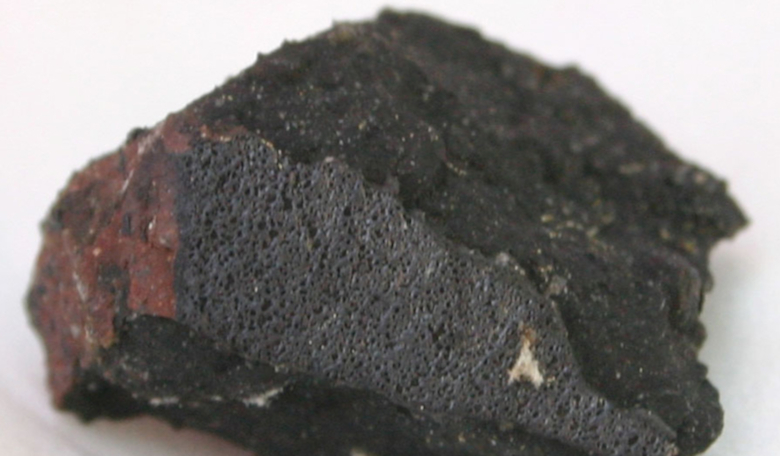A meteorite from an ancient asteroid that formed 4.6 billion years ago has been found to contain small pockets of carbon dioxide-rich liquid water, a finding which provides direct evidence of the dynamic evolution of the solar system.
On this planet at least, water is key to life. Without it, the chemistry of life would simply be non-existent as this simple molecule makes most biological chemical reactions possible.
And, thankfully for us, water is fairly common in the Universe. It can be found everywhere from vast interstellar dust clouds to locked up in material in and under the arid surface of Mars.
However, most of this water is in the form of ice, which is not so handy as solid water can't act as a lubricant to facilitate key molecular processes.
Water in its liquid form is therefore considered a commodity that is far more rare in the Universe, so finding some, especially in a rock that has been traversing space for billions of years, is a big deal.
But that is what a team of scientists headed by Dr. Akira Tsuchiyama, a visiting research Professor at Ritsumeikan University, have just found in fragments from a meteorite that fell to Earth in 2012 and was made famous after diamonds were found embedded in the rock.
Known as Sutter’s Mill after the California Gold Rush site near where pieces were recovered, its fragments are from a type of meteorite known as a carbonaceous chondrite or C chondrites. These specimens make up less than 5 percent of the chondrites that fall on Earth and represent some of the most pristine matter known.
Water has been found in C chondrites before but as hydrous minerals – solids with molecular water incorporated within them. This recent discovery is the first time that liquid water has been identified.
Using advanced microscopy techniques, the team spotted the minute water inclusions in a tiny calcite crystal tucked in the meteorite fragments.
Tsuchiyama and team’s analysis of the liquid revealed it contained at least 15 percent carbon dioxide, a finding which suggests that the meteorite’s parent asteroid formed beyond Jupiter’s orbit before being transported into the inner Solar System.
“The inclusions likely occurred due to the parent asteroid forming with bits of frozen water and carbon dioxide inside of it. This would require the asteroid to have formed in a part of the solar system cold enough for water and carbon dioxide to freeze, and these conditions would place the site of formation far outside of Earth’s orbit, likely beyond even the orbit of Jupiter,” Tsuchiyama said in a statement on the Ritsumeikan University’s website.
This idea backs up previous studies which suggest that asteroids rich in small, volatile molecules like water and carbon dioxide formed beyond Jupiter’s orbit before being flung closer to the sun through interactions with the gas giant.
The discovery of water inclusions within a carbonaceous chondrite meteorite from the early history of the solar system is an important achievement for planetary science Tsuchiyama proudly notes. “This achievement shows that our team could detect a tiny fluid trapped in a mineral 4.6 billion years ago.”
Tsuchiyama and team’s research, titled, “Discovery of primitive CO2-bearing fluid in an aqueously altered carbonaceous chondrite,” can be found in Science Advances.











